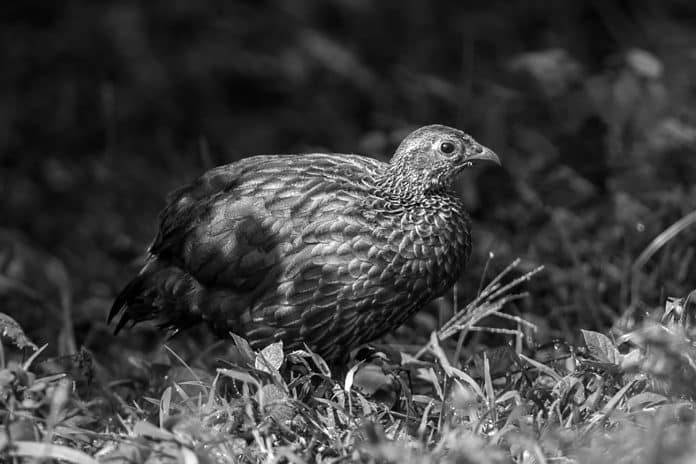Exploring the Habitat and Behavior of the Scaly Francolin in Tanzania: A Closer Look
The Scaly Francolin, scientifically known as Francolinus squamatus, is a species of bird that can be found in various parts of Tanzania. This fascinating bird is a member of the Phasianidae family and is known for its unique physical characteristics and interesting behavior. In this article, we will take a closer look at the habitat and behavior of the Scaly Francolin in Tanzania, shedding light on its geographic distribution, physical characteristics, habitat preferences, diet and feeding habits, breeding behavior and nesting habits, vocalization and communication, as well as the threats it faces and the conservation efforts being made to protect it. Additionally, we will explore the opportunities for birdwatching and studying the Scaly Francolin in Tanzania, highlighting the importance of appreciating the beauty and significance of this magnificent bird.
Geographic distribution of the Scaly Francolin in Tanzania
The Scaly Francolin is primarily found in the eastern and northeastern regions of Tanzania. It occupies a range of habitats including woodland, grassland, and savannah areas. This bird is commonly sighted in the coastal lowlands, as well as in the Usambara and Uluguru Mountains. The Scaly Francolin’s distribution in Tanzania is influenced by factors such as food availability, vegetation cover, and suitable breeding grounds. It is important to note that the Scaly Francolin is a resident bird and does not undertake long-distance migrations.
Physical characteristics of the Scaly Francolin
The Scaly Francolin is a medium-sized bird, measuring approximately 25-30 centimeters in length. It has a robust body with a rounded shape and a distinctively short tail. The plumage of the Scaly Francolin is predominantly brown, with a scaly pattern on its feathers, hence its name. The male and female birds have similar physical features, making it difficult to distinguish between the sexes based on appearance alone. However, during the breeding season, the male Scaly Francolin may exhibit slight variations in coloration, with brighter or more vibrant feathers.
The Scaly Francolin has a unique facial pattern, with a red or orange eye ring and a light-colored bill. Its legs are strong and well-adapted for walking and running on the ground. These physical characteristics enable the Scaly Francolin to navigate its natural habitat with ease, foraging for food and seeking shelter.
Habitat preferences of the Scaly Francolin
The Scaly Francolin is primarily found in areas with dense vegetation, including woodlands, grasslands, and savannahs. It prefers habitats that offer a mixture of open spaces and cover, allowing it to feed on the ground while providing protection from predators. The Scaly Francolin also frequents areas near water sources, such as rivers or marshes, as it relies on these sources for drinking and bathing.
The presence of suitable roosting and nesting sites is crucial for the Scaly Francolin’s habitat preference. It tends to seek out areas with low shrubs or tall grasses that provide cover and protection. These areas are ideal for nesting, as they offer concealment from potential threats and predators. The Scaly Francolin’s habitat preferences are closely linked to its feeding habits and breeding behavior, which we will explore in the following sections.
Diet and feeding habits of the Scaly Francolin
The Scaly Francolin is an omnivorous bird, feeding on a variety of plant matter, insects, and small invertebrates. Its diet primarily consists of seeds, berries, fruits, and leaves. This bird is also known to consume insects, such as beetles, ants, grasshoppers, and termites, which provide an additional source of protein. The Scaly Francolin forages on the ground, scratching the surface with its strong legs and bill to uncover food items.
During the breeding season, the Scaly Francolin’s diet may include a higher proportion of insects, as they provide essential nutrients for both the adult birds and their offspring. The availability of food resources influences the Scaly Francolin’s distribution within its habitat, as it will move to areas with abundant food sources. This bird plays a significant role in seed dispersal, contributing to the ecological balance of its habitat.
Breeding behavior and nesting habits of the Scaly Francolin
The breeding behavior of the Scaly Francolin typically occurs during the rainy season in Tanzania, which provides favorable conditions for nesting and raising offspring. The male Scaly Francolin engages in courtship displays, which involve vocalizations and visual displays to attract a mate. These displays often include puffing up the feathers, lowering the wings, and making loud calls.
Once a pair has formed, the female Scaly Francolin selects a suitable nesting site, usually on the ground in a well-concealed location. She constructs a shallow scrape in the soil and lines it with leaves, grass, and other plant materials. The female typically lays a clutch of 5-8 eggs, which she incubates for approximately 21-23 days. Both the male and female take turns incubating the eggs and caring for the hatchlings.
The young Scaly Francolins are precocial, meaning they are able to leave the nest shortly after hatching. They are capable of feeding themselves and are guided by their parents to find food and navigate their surroundings. The family unit stays together for several weeks until the young birds gain independence.
Vocalization and communication of the Scaly Francolin
The Scaly Francolin is known for its distinctive vocalizations, which play a crucial role in communication within the species. The male Scaly Francolin has a loud and melodic call, consisting of a series of clear, descending notes. This call serves multiple purposes, including attracting a mate, defending territory, and maintaining contact with other members of the group.
During the breeding season, the male Scaly Francolin’s calls become more frequent and intense, as he establishes his territory and competes with other males for a mate. The female Scaly Francolin also vocalizes, but her calls are generally softer and less frequent. The vocalizations of the Scaly Francolin contribute to the rich soundscape of its habitat and serve as a means of communication between individuals within the species.
Threats and conservation efforts for the Scaly Francolin in Tanzania
The Scaly Francolin faces several threats in Tanzania that have led to a decline in its population. Habitat loss and degradation due to deforestation, agricultural expansion, and human development have severely impacted the availability of suitable habitats for this bird. The conversion of natural habitats into farmland and the use of pesticides also pose a threat to the Scaly Francolin’s survival, as it affects the availability of food sources and can lead to direct poisoning.
Additionally, the illegal hunting and trapping of the Scaly Francolin for the pet trade have further contributed to its decline. The demand for this bird as a caged pet has put additional pressure on its already vulnerable population. The Scaly Francolin is listed as a near-threatened species on the IUCN Red List, highlighting the urgent need for conservation efforts to protect this bird in Tanzania.
Conservation organizations and local communities in Tanzania are working together to address these threats and protect the Scaly Francolin. Efforts are focused on habitat restoration, raising awareness about the importance of conserving the Scaly Francolin, and implementing measures to combat illegal hunting and trapping. It is crucial to ensure the long-term survival of this bird and preserve its place within the ecosystem.
Opportunities for birdwatching and studying the Scaly Francolin in Tanzania

Tanzania offers fantastic opportunities for birdwatchers and researchers to observe and study the Scaly Francolin in its natural habitat. With its diverse range of ecosystems, including woodlands, grasslands, and mountains, Tanzania provides an ideal environment for observing a variety of bird species, including the Scaly Francolin.
Birdwatchers can explore national parks, such as the Serengeti or the Ngorongoro Conservation Area, where the Scaly Francolin can be found. Guided birdwatching tours and expert local guides can provide valuable insights into the behavior and habitat preferences of the Scaly Francolin, enhancing the birdwatching experience.
Researchers interested in studying the Scaly Francolin can contribute to ongoing conservation efforts by conducting field surveys, monitoring population trends, and studying the bird’s ecology and behavior. Collaborating with local conservation organizations and universities can provide access to valuable resources and support for research projects.
By engaging in responsible birdwatching and research activities, visitors to Tanzania can contribute to the conservation of the Scaly Francolin and gain a deeper appreciation for the unique biodiversity of the region.
Conclusion: Appreciating the beauty and importance of the Scaly Francolin in Tanzania
The Scaly Francolin is a remarkable bird species that adds to the rich tapestry of Tanzania’s biodiversity. Its unique physical characteristics, interesting behavior, and habitat preferences make it an important species to study and protect. By understanding the geographic distribution, physical characteristics, habitat preferences, diet and feeding habits, breeding behavior, vocalization and communication, as well as the threats and conservation efforts related to the Scaly Francolin, we can develop a greater appreciation for the beauty and importance of this bird in Tanzania.
It is crucial that we recognize the value of preserving the Scaly Francolin’s habitat and supporting conservation efforts to ensure its long-term survival. By visiting Tanzania’s national parks, engaging in responsible birdwatching, and supporting local conservation organizations, we can actively contribute to the protection of the Scaly Francolin and other bird species in the region. Let us cherish the natural wonders of Tanzania and work together to safeguard its incredible biodiversity for future generations.
For more articles related to Wildlife in Tanzania (Animals), click here!


































